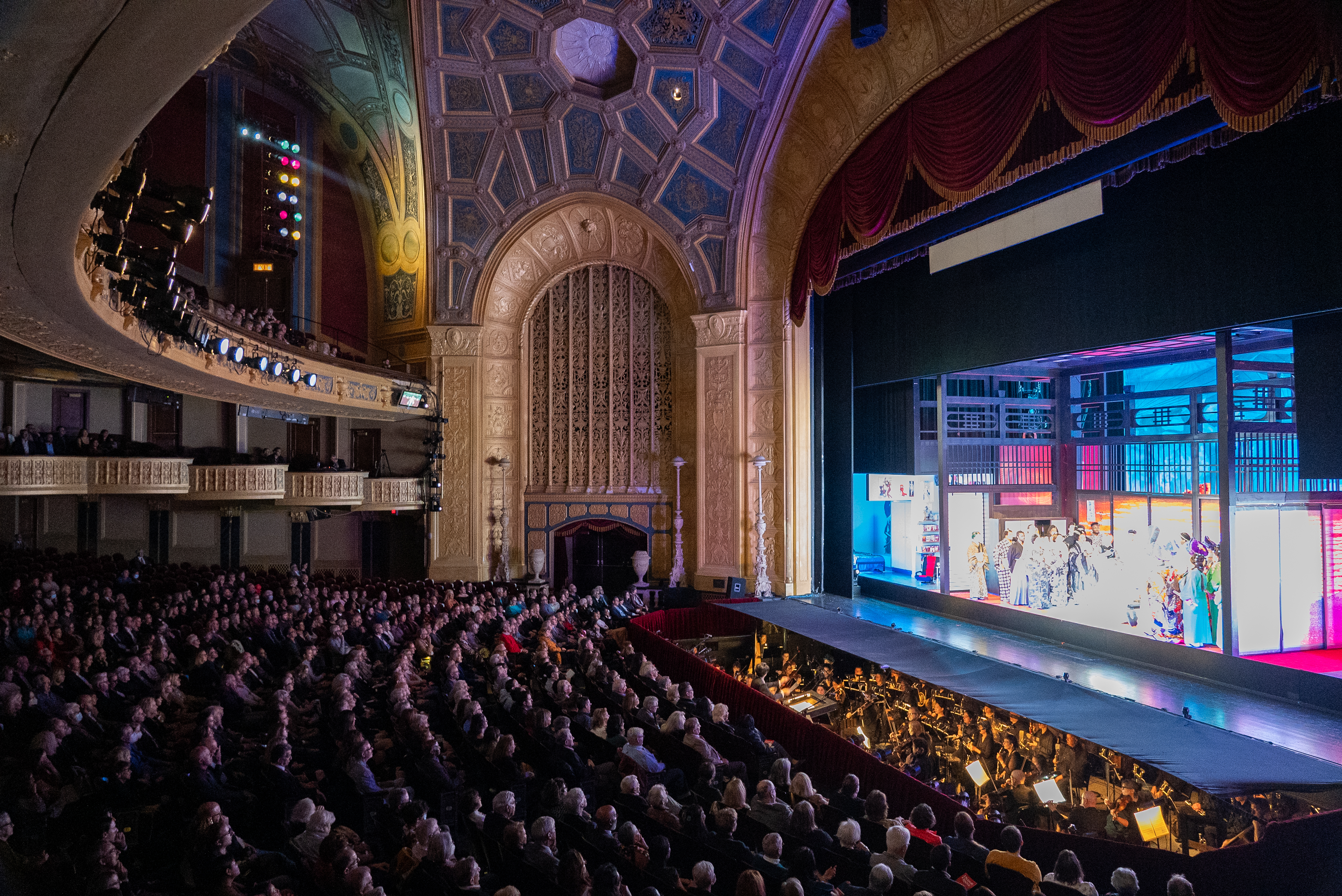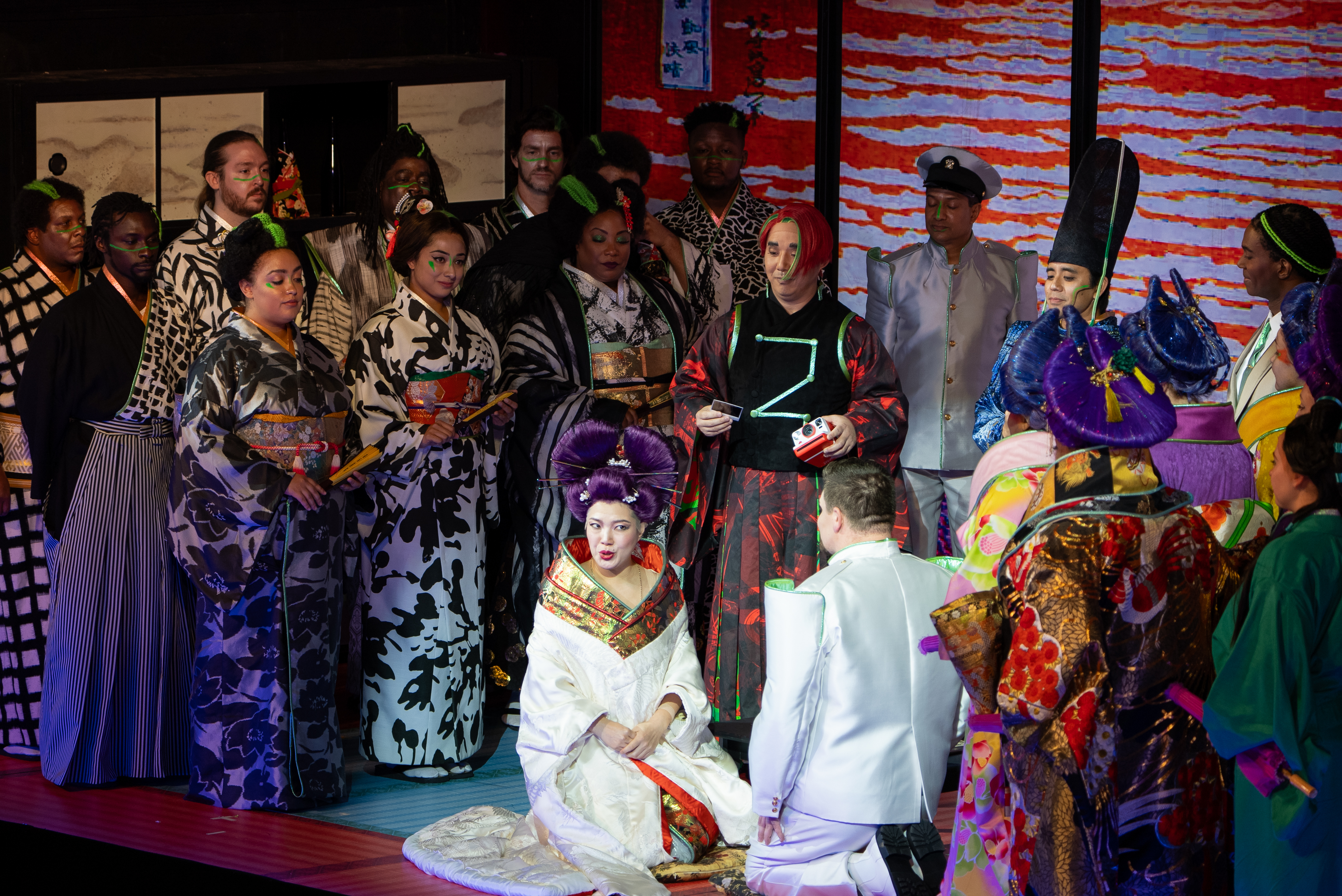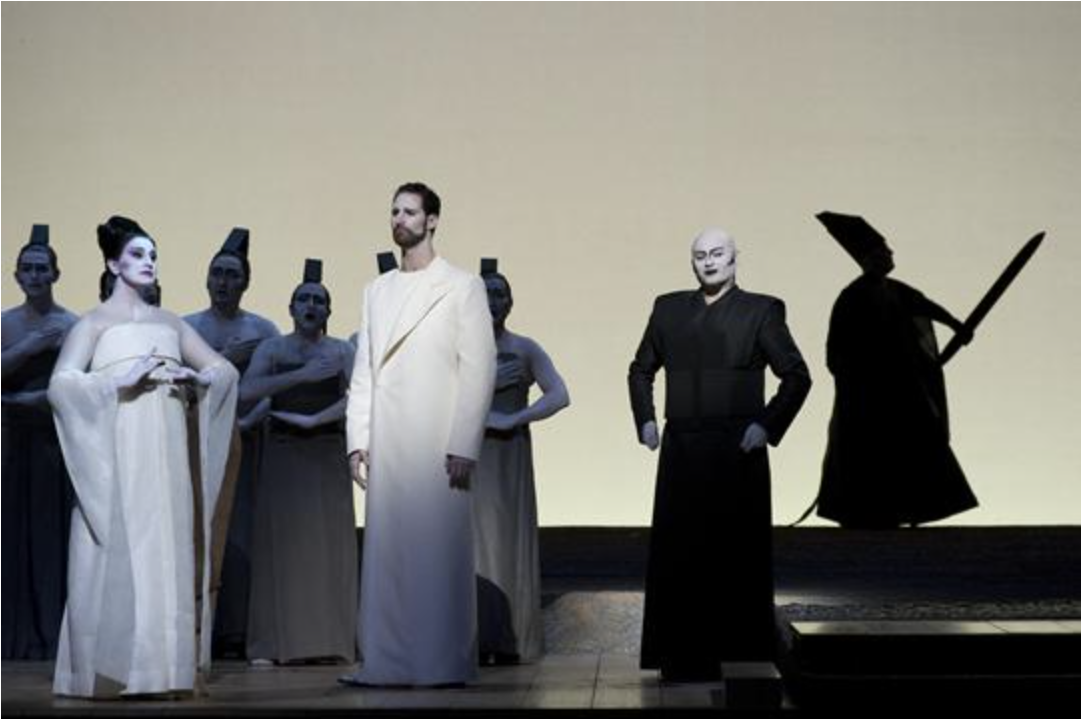
Roopa Chauhan
October 30, 2023

Overcoming stereotypes in a beloved opera steeped in tradition is not an easy feat, but there is, perhaps, no better place to do this than Detroit, a city accustomed to reclaiming its spaces and its people through art and music. The Detroit Opera House opened its season on October 7, 2023 with an original co-production of Giacomo Puccini’s Madame Butterfly bringing fresh voices and viewpoints to a timeless classic.
Director Matthew Ozawa put together an all Japanese and Japanese-American creative team to challenge established interpretations of the opera by leaning into the fantasy of Japan embraced by Puccini’s turn-of-the-century imagination. Members of the cast were also Asian American Pacific Islanders (AAPI), including Korean soprano, Karah Son, and Japanese conductor, Kensho Wantanabe2. The Detroit Opera Chorus Master, Suzanne Mallare Acton is Filipino American. She said that collaborating with a predominantly AAPI team was an enjoyable and deeply moving experience3.
Madame Butterfly was first performed on February 17, 1904 in Milan, Italy. Puccini based the ill-fated love story between an adolescent geisha, Cio-Cio-San, and an American military officer, Lieutenant B.F. Pinkerton, on a play by David Belasco, which itself was based on a short story by John Luther Long who in turn was inspired by French novelist Pierre Loti4. Cio-Cio-San was, thus, fashioned through and through by the white male’s gaze and she quite obviously remains the product of a specific time and place.
To be fair, Puccini did some due diligence when writing the opera. Though he had never set foot in Japan, one of the opera’s librettist, Luigi Illica, visited Nagasaki where the work is set. Puccini also listened to Japanese folk music and met with Japanese people living in Europe at the time5. One could say he intended to represent Japanese culture as authentically as possible. Yet, while the music endures, the story does not necessarily resonate with a diverse, modern-day audience.
The co-production’s Director, Matthew Ozawa, has been grappling with the question of Madame Butterfly’s relevance for a long time; he has studied the masterpiece for over 20 years and this was his 4th time directing it6. Though he loves the opera, he has also felt “ostracized7” by it. Ozawa is the biracial son of a Caucasian mother and a Japanese father. As such, he cannot help but look at the work through the lens of the “East-West conflict8”, which Cio-Cio-San and Pinkerton embody.
During an Opera Talk organized by The Detroit Opera on the October 15, 2023, Ozawa explains the context that led to his bold decision to go against the grain:
I was slated to do a very traditional production with existing designs. Everything was planned out for me except I knew I could create my own staging. Having done this several times before, one of the things that has always been difficult is that most casts I have worked with have not been Asian. My experience has involved working with a lot of Caucasians or other races in trying to unpack what it means to be Japanese. Ultimately, I realized it was the designs that straight-jacketed me because they said something about Japan that was not what I or someone who is Japanese would say about the country; they were a western perspective of Japan. The designs would also elicit certain types of mannerisms and behavior by the singers. Some of those mannerisms (shuffling around the stage or bowing) could sometimes feel like stereotypes. During the pandemic, I realized that the world was changing and we as people were changing and the conversations we were having were changing. I could no longer put my Japanese name on a production that I did not feel was representative of that part of myself and my culture.9
Ozawa refused to direct another traditional production of Madame Butterfly. He was pleasantly surprised when the Cincinnati Opera and the Detroit Opera came back to him and asked what he wanted to do instead:
I would love to do a new production, to explore it completely afresh, and that it would be important to bring in a completely Japanese design team to hear their perspective as Japanese women not only on the character of Butterfly, but on the piece itself. But we are going to do every single note Puccini wrote. We are not going to change any of the text. She will commit suicide at the end, but we will see it through a new lens.10

In the Director’s Note, Ozawa asks the audience to consider, “what experiences, perspectives, histories, and biases … we bring with us as we engage with Butterfly’s story?12” Indeed, while the theatrical experience is certainly a shared experience, it is also a subjective one. The relationship between the audience and the performers is one of give and take.
So, how can a contemporary staging of an adored opera transcend tradition to free Cio-Cio-San from what many consider an “orientalist13” representation of the Japanese? To find a way into the opera for himself and a diverse audience, Ozawa assembled a 100% Japanese creative team as promised14 and together they embarked on a very different journey into the heart of Madame Butterfly. They reclaimed the opera’s story by drawing attention to the “fantasy of Japan” and decided to set the story in virtual reality. As such, Pinkerton is a 21st century gamer who is thrust into Cio-Cio-San’s world using a VR headset. This make-believe place is vibrant and colorful. It is inspired by Japanese anime with its bright, fluorescent colors and playful hair pieces. In this figurative representation, the production invites the audience to consider the extent to which Puccini’s Japan is a western construct without diminishing the beauty of the music.

Having seen Robert Wilson’s austere, colorless staging of Madame Butterfly at the Paris Opera in 2011, I could not help but notice the stark contrast between the versions. The clean lines of Wilson’s minimalistic design and costumes ignored the question of cultural representation perhaps to focus the audience’s attention on the music’s tone and mood16, which was effective to a point. But somehow, the more we pretend culture does not matter, the more conspicuous its absence is; it becomes the elephant in the room highlighting an emptiness at its core.
Ozawa’s Madame Butterfly, however, welcomed the question of representation which infused new life into the opera thereby rendering it relatable and relevant. When the lights dimmed at the end, an enthralled audience leapt to its feet. In her Detroit Opera debut, Karah Son’s impeccable performance as Butterfly stunned. She put her personal stamp on one of the most haunting and iconic soprano arias in the operatic repertoire, “Un Bel Dì Vedremo” or “One Fine Day We’ll See17” - her voice reaching new heights as she sang the final phrase, “tienti la tua paura, - io con sicura fede l’aspetto” (hold back your fears, I with secure faith wait for him)18. Ultimately musical talent makes a successful performance. The staging, decor and costumes can only enhance it.
Butterfly’s obstinate and innocent belief in her husband’s return renders the events leading up to her suicide all the more tragic. Traditionally, this is where the opera ends - with Butterfly’s death, but in this version, she gets up and walks away – leaving the original storyline behind her. She stops, turns to the audience, glares menacingly as if to say, “this is on you”. Then, curtain. And thunderous applause. This theatrical equivalent of breaking the fourth wall draws attention to the conceit that is the tragic figure of Butterfly – a beautiful, noble, undeserving victim. Audiences take pleasure in watching her pine after someone who will ultimately betray her; this is what makes those high notes soar and tug at our heart strings. The genius behind this staging lies not only in how Butterfly returns our gaze, but how she stares down the century-old male gaze of her creators, starting with Giacomo Puccini, the opera’s Italian composer. Regional co-productions in cities like Detroit make this appropriation possible.
1. Director Matthew Ozawa’s all-Japanese and Japanese-American creative team included costumes designed by Maiko Matsushima, lighting designed by YukiNakase Link, and sets designed by dots, a multi-disciplinary design collective.
2. Kensho Watanabe, “About Me,” Kensho Watanabe’s Portfolio, accessed October 27, 2023, https://www.kenshowatanabe.com/about.
3. Suzanne Mallare Acton, in discussion with the author, October 21, 2023.
4. Madame Butterfly, program, Detroit: the Detroit Opera House, October 15, 2023, p. 19
5. “Madama Butterfly,” in Encyclopaedia Britannica, https://www.britannica.com/topic/Madama-Butterfly, accessed October 27, 2023.
6. Opera Talks Event at The Detroit Opera House with Director Matthew Ozawa and Detroit Opera House Artistic Director Yuval Sharon,” Detroit Opera House, October 15, 2023.
7. Madame Butterfly, program, Detroit: the Detroit Opera House, October 15, 2023, p. 19
8. Ibid, 19.
9. Opera Talks Event at The Detroit Opera House with Director Matthew Ozawa and Detroit Opera House Artistic Director Yuval Sharon,” Detroit Opera House, October 15, 2023.
10. Ibid.
11. Karah Son (Cio-Cio-San), Julius Ahn (Goro), Eric Taylor (Pinkerton), and chorus in Detroit Opera’s Madame Butterfly, October 7, 2023.
12. Madame Butterfly, program, Detroit: the Detroit Opera House, October 15, 2023, p. 19
13. Edward W. Said, “Introduction to Orientalism,” in The Edward Said Reader, ed. Moustafa Bayoumi and Andrew Rubin (New York: Vintage Books, 2000), 63-113.
14. Madame Butterfly, program, Detroit: the Detroit Opera House, October 15, 2023, p. 19
15. “Puccini’s Madama Butterfly,” Opera Journal Blog, February 10, 2011, https://operajournal.blogspot.com/2011/02/puccini-madama-butterfly.html.
16. Ibid.
17. Aaron Green, “Un Bel Dì, Vedremo” Text and Translation: Puccini’s Unforgettable Soprano Aria from Madama Butterfly, LiveAbout, accessed October 27, 2023, https://www.liveabout.com/un-bel-di-vedremo-lyrics-724337
18. Ibid.